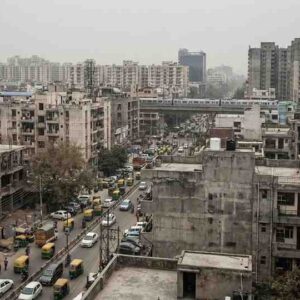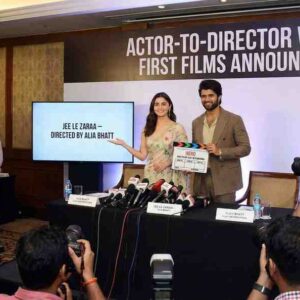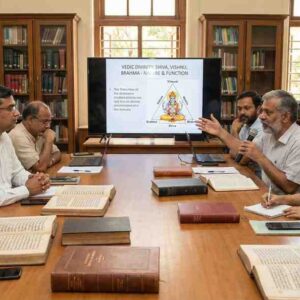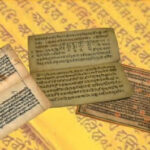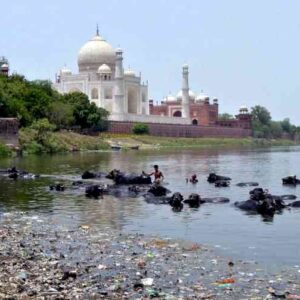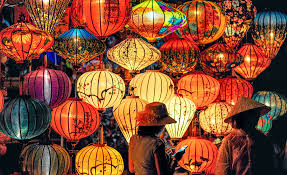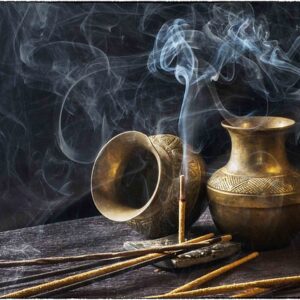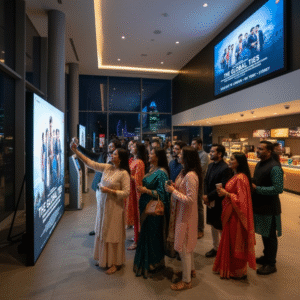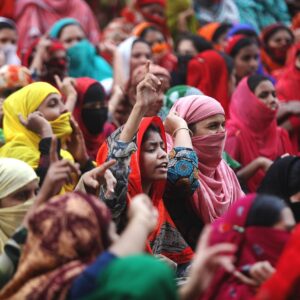Exploring the Influence of Cultural Identity on Uttar Pradesh’s Political Landscape
KEY METRICS:
- Cultural Diversity: Uttar Pradesh is home to over 220 million people, representing a variety of cultural, religious, and linguistic groups, including Hindus, Muslims, Jains, and Sikhs.
- Electoral Influence: Uttar Pradesh has 403 legislative assembly seats, and cultural factors—such as caste, religion, and language—play a significant role in shaping political decisions and voter behavior.
- Tourism and Heritage: The state houses iconic cultural landmarks such as the Taj Mahal, Kashi Vishwanath Temple, and Ayodhya, contributing heavily to India’s tourism sector.
- Religious Demographics: Approximately 79% of the population identifies as Hindu, while Muslims make up around 19%, with cultural and religious identities influencing political discourse.
NEWS BODY
Uttar Pradesh (UP), a state rich in cultural heritage, is often seen as a microcosm of India’s diverse social fabric. With its deep-rooted religious traditions, caste systems, and cultural landmarks, the intersection of culture and politics in UP plays a significant role in shaping the state’s political discourse. As political parties continue to navigate the cultural terrain, what’s at stake is not just electoral success but also the delicate balance of social cohesion, identity, and long-term development in one of India’s most populous and politically significant states.
Cultural Identity: A Driving Force in Politics
Cultural identity in Uttar Pradesh, particularly religious and caste-based affiliations, has always been intertwined with the state’s politics. The social fabric of the state is heavily influenced by the diversity of its population, where cultural expressions and religious practices form the basis of not only personal identities but also political strategies.
Political parties in UP often tailor their campaigns to resonate with specific cultural and religious groups. For instance, theBharatiya Janata Party(BJP) has made significant inroads by focusing on Hindu cultural sentiments, particularly surrounding issues like the construction of the Ram Mandir in Ayodhya. TheSamajwadi Party(SP) andBahujan Samaj Party(BSP) have traditionally found support among Muslim and Dalit communities, respectively, with cultural and caste-based identities driving much of their electoral base.
In recent elections, political leaders have increasingly capitalized on religious identity, leading to both solidarity and division. While this approach helps in consolidating vote banks, it also risks deepening communal divisions, affecting the state’s unity and social harmony.
Religion and Politics: The Role of the Ram Mandir and Other Iconic Sites
The construction of theRam Mandirin Ayodhya is one of the most politically charged cultural issues in Uttar Pradesh. For decades, this issue has been a flashpoint for political mobilization. TheBJP, which has long championed the cause of the Ram Mandir, has used it to galvanize Hindu voters, appealing to cultural pride and religious sentiments.
Ayodhya, the birthplace of Lord Ram, is not only a religious site but has also become a symbol of political and cultural identity. The temple’s construction is expected to further enhance its cultural and political significance, particularly in a state where religious identity often shapes political alliances.
Similarly, other iconic sites such as theKashi Vishwanath Templein Varanasi and theTaj Mahalin Agra are not just cultural landmarks; they are also deeply embedded in UP’s political narrative. Political leaders often invoke these landmarks to connect with voters, framing issues around religion, heritage, and cultural pride. However, this focus on religion and culture also raises concerns about the marginalization of other communities, particularly Muslims, who feel sidelined in the growing Hindu-centric political discourse.
Caste Politics: A Cultural and Political Backbone
Caste politics in Uttar Pradesh has been a defining feature of its political landscape. The state’s caste-based voting patterns significantly influence election results. TheBSP, under Mayawati, has traditionally represented Dalits, positioning itself as the champion of the marginalized. TheSP, led by Akhilesh Yadav, draws support from the Yadav community, while also appealing to other backward classes (OBCs) and Muslims.
The rise ofBJPhas disrupted traditional caste-based politics by expanding its coalition to include Dalits, OBCs, and even some segments of the Muslim population, leveraging the power of Hindu unity while incorporating elements of Dalit and backward caste mobilization. The BJP’s approach has shifted caste politics from a primary factor of division to one of coalition-building, where the cultural narratives of social justice and empowerment resonate with broader sections of society.
However, caste remains a deeply entrenched cultural element that still influences voter preferences and political loyalties. This continued focus on caste, rather than more universal concerns like economic development, contributes to the persistence of divisions within society, hindering efforts for true social integration.
Cultural Movements and the Role of Civil Society
Beyond electoral politics, civil society in Uttar Pradesh plays a significant role in shaping the cultural and political discourse. Movements forwomen’s rights,education, andenvironmental justicehave emerged in response to the challenges posed by entrenched social hierarchies and political apathy. Organizations focusing on women’s empowerment, particularly in rural areas, are working to challenge traditional gender norms, offering new avenues for dialogue and political change.
Similarly, environmental activists are using the state’s cultural heritage as a tool for mobilizing the public on issues such as pollution and conservation. The cultural significance of theGanga River, which flows through Varanasi and other sacred towns, has provided a platform for environmental campaigns that combine religious symbolism with modern concerns about sustainability.
However, these movements often struggle to achieve political traction, particularly when they challenge deeply entrenched political interests or cultural norms. The limited space for dissent and the growing influence of culture-based political narratives can stifle the kind of open dialogue needed to address broader societal issues.
The Stakes: Unity or Division?
At the heart of the intersection of culture and politics in Uttar Pradesh is the question of social cohesion. Will the growing prominence of cultural and religious identity in politics lead to a more inclusive, diverse society, or will it exacerbate divisions? While the recognition of cultural identities is essential for empowering marginalized communities, there is a fine line between cultural expression and political exploitation.
The future of Uttar Pradesh’s political landscape will depend on the state’s ability to balance cultural pride with inclusive growth. Moving beyond narrow, identity-based politics and focusing on shared values—like economic development, education, and social justice—could help forge a stronger, more united Uttar Pradesh. The state’s leaders must navigate the complex cultural terrain carefully to ensure that the state’s political progress does not come at the expense of social harmony.
Conclusion
Uttar Pradesh’s political future is intricately tied to its cultural identity. The interplay between religion, caste, and politics has the potential to either unite or divide the state’s diverse population. As political leaders increasingly leverage cultural symbols to connect with voters, the state must carefully consider the long-term consequences of this approach. Ensuring that cultural and political narratives promote inclusivity, unity, and equitable growth will determine whether Uttar Pradesh can evolve into a truly progressive and harmonious state, or whether it will remain a battleground for divisive cultural politics.

